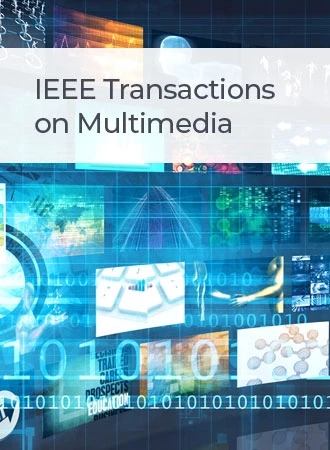在 5G 网络中向异构客户端提供 360◦ 实时视频流
IF 8.4
1区 计算机科学
Q1 COMPUTER SCIENCE, INFORMATION SYSTEMS
引用次数: 0
摘要
我们研究了在 5G 网络中向异构移动 VR 客户端传输经过速率失真计算优化的 360° 实时视频流的问题。客户群包括具有单(LTE)或双(LTE/NR)蜂窝连接功能的设备。内容在原点使用可扩展的 360° 平铺技术进行压缩,并通过单一骨干网络链路发送到客户端。然后,移动边缘服务器利用正式的速率-失真-计算优化技术,根据各个客户端及其各自的下行链路传输速率调整传入的流媒体数据。单连接客户端由边缘服务器根据其下行链路传输能力和设备计算能力提供内容的基线表示/层。双连接客户端在其 LTE 连接上并行获得基线内容层服务,在其 NR 连接上获得互补的视口特定增强层服务,协同适应各自的下行链路传输能力和计算能力。我们提出了两个优化问题,以便在每种情况下进行边缘服务器的操作,同时考虑到传输过程的关键系统组件和诱发的端到端延迟,目的是最大限度地提高向每个客户端传输的沉浸保真度。我们探索了各自的几何编程优化策略,以较低的复杂度计算出最优解。我们严格分析了两种优化算法的计算复杂度。在我们的评估中,我们证明了相对于两种最先进的技术,我们在多个评估因素上取得了相当大的性能提升。我们还检验了我们的方法对不准确的用户导航预测、瞬时 NR 链路损耗、动态 LTE 带宽变化和各种 360° 视频内容的鲁棒性。最后,我们将结果与五种流行的视频质量指标进行了对比。本文公开分享了一个数据集,该数据集捕捉了我们在评估中使用的 360° 视频内容在多个当代质量指标下的速率-质量权衡,从而促进了进一步的研究和后续工作,为社区做出了贡献。本文章由计算机程序翻译,如有差异,请以英文原文为准。
Live 360° Video Streaming to Heterogeneous Clients in 5G Networks
We investigate rate-distortion-computing optimized live 360° video streaming to heterogeneous mobile VR clients in 5G networks. The client population comprises devices that feature single (LTE) or dual (LTE/NR) cellular connectivity. The content is compressed using scalable 360° tiling at the origin and sent towards the clients over a single backbone network link. A mobile edge server then adapts the incoming streaming data to the individual clients and their respective down-link transmission rates using formal rate-distortion-computing optimization. Single connectivity clients are served by the edge server a baseline representation/layer of the content adapted to their down-link transmission capacity and device computing capability. A dual connectivity client is served in parallel a baseline content layer on its LTE connectivity and a complementary viewport-specific enhancement layer on its NR connectivity, synergistically adapted to the respective down-links' transmission capacities and its computing capability. We formulate two optimization problems to conduct the operation of the edge server in each case, taking into account the key system components of the delivery process and induced end-to-end latency, aiming to maximize the immersion fidelity delivered to each client. We explore respective geometric programming optimization strategies that compute the optimal solutions at lower complexity. We rigorously analyze the computational complexity of the two optimization algorithms we formulate. In our evaluation, we demonstrate considerable performance gains over multiple assessment factors relative to two state-of-the-art techniques. We also examine the robustness of our approach to inaccurate user navigation prediction, transient NR link loss, dynamic LTE bandwidth variations, and diverse 360° video content. Finally, we contrast our results over five popular video quality metrics. The paper makes a community contribution by publicly sharing a dataset that captures the rate-quality trade-offs of the 360° video content used in our evaluation, for multiple contemporary quality metrics, to stimulate further studies and follow up work.
求助全文
通过发布文献求助,成功后即可免费获取论文全文。
去求助
来源期刊

IEEE Transactions on Multimedia
工程技术-电信学
CiteScore
11.70
自引率
11.00%
发文量
576
审稿时长
5.5 months
期刊介绍:
The IEEE Transactions on Multimedia delves into diverse aspects of multimedia technology and applications, covering circuits, networking, signal processing, systems, software, and systems integration. The scope aligns with the Fields of Interest of the sponsors, ensuring a comprehensive exploration of research in multimedia.
 求助内容:
求助内容: 应助结果提醒方式:
应助结果提醒方式:


